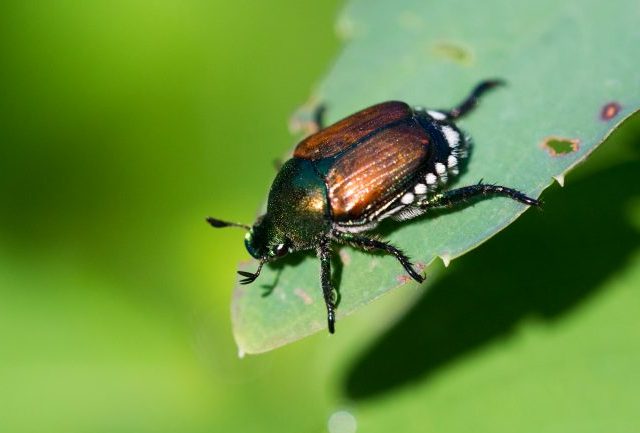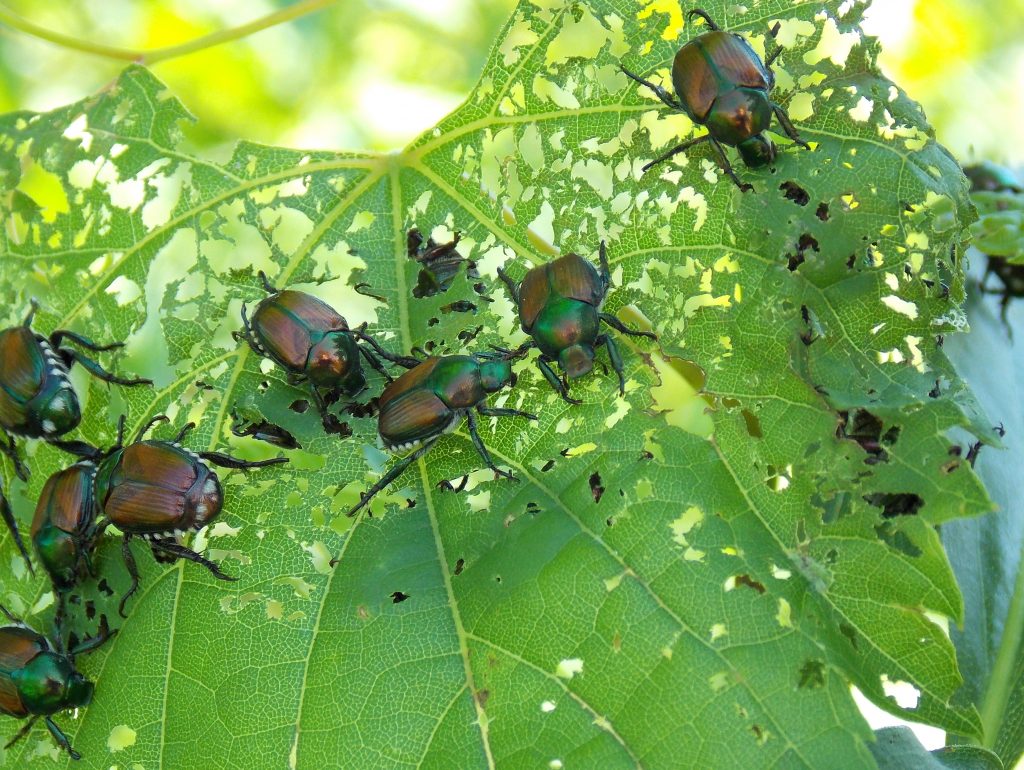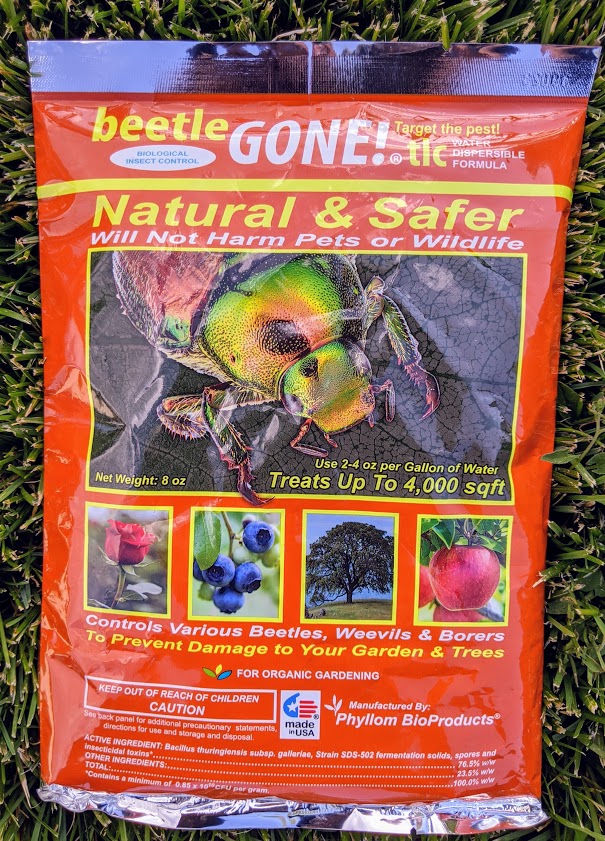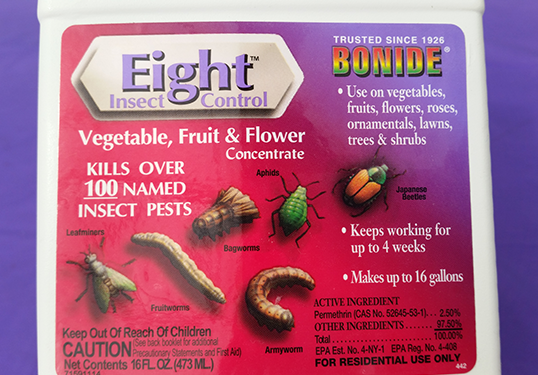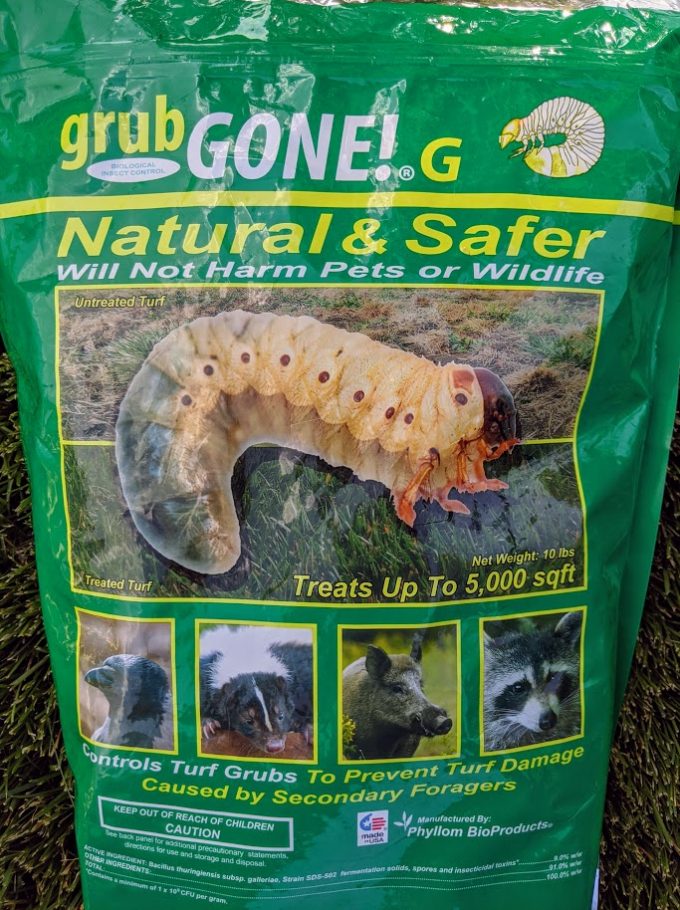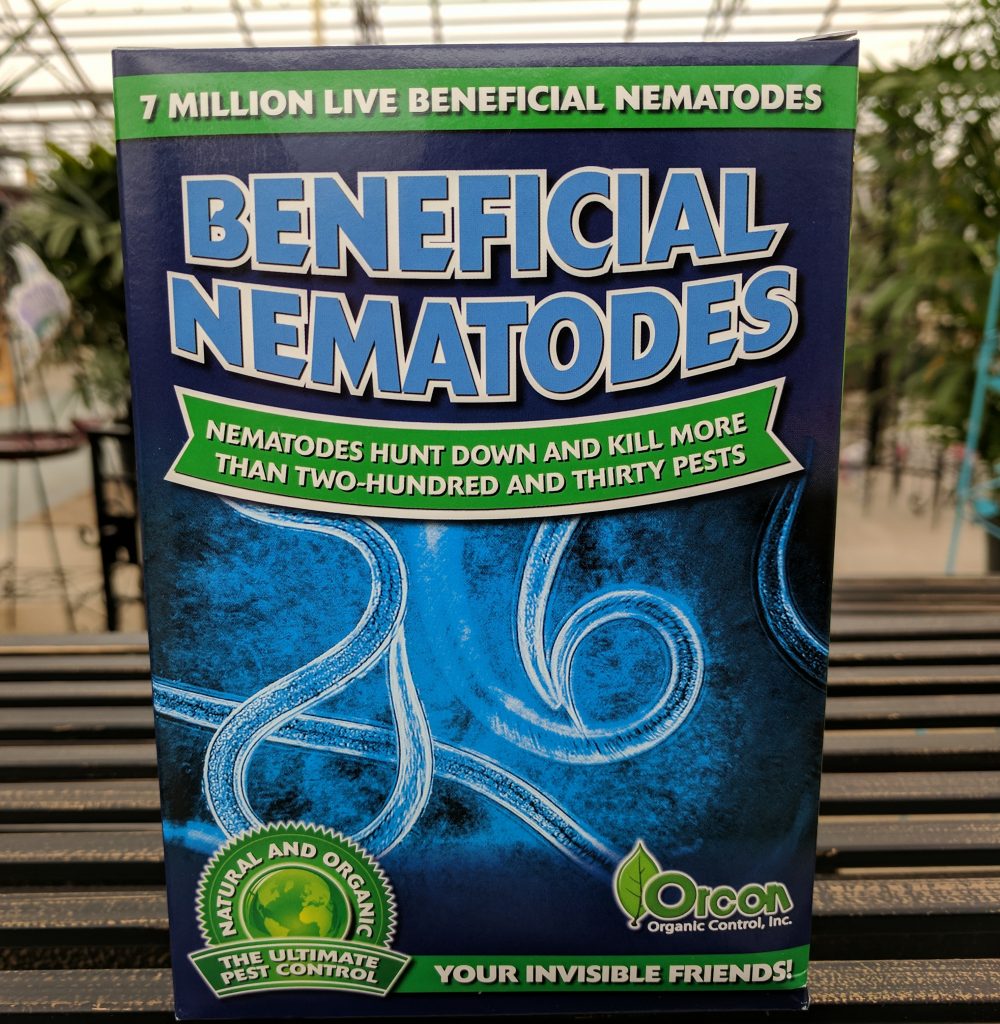I’d love to be able to tell you that if we work long enough and hard enough, one day we’ll eradicate Japanese beetles from the Colorado Front Range. I can’t tell you that because, according to the experts, it won’t happen. The beetles are here to stay. That doesn’t mean we can’t fight back and make their lives as difficult as possible, because we can! The question is how best to do that.
No new magic bullets
Research is going on across the country, and progress is being made on new ways to try to mitigate the beetles’ damage. That’s great! But for here and now, one of the best ways to fight back is also one of the most environmentally friendly, and it’s virtually free! Simply knock them into a bucket of soapy water. Japanese beetles naturally play dead and drop off of plants when they sense danger. Why not use that against them?
This easy approach can be surprisingly effective! A study by Eastern Illinois University shows that hand-removal of the beetles “significantly” reduces damage to plants. But the study has more good news. Removing the beetles in the early evening, around 7:00, dramatically reduces the number of beetles congregating or clustering on that same plant the next morning. It has to do with a stress hormone the plants themselves release when they’re under attack. The beetles will cue off of that strong plant hormone and be drawn there by the dozens when they begin flying again the next day.
The study shows that even if you remove the beetles just once a day, doing it at 7:00 in the evening is actually more effective than removing them three separate times earlier in the day! That’s information we can use!
Want more weapons in your arsenal?
Adult beetles do the most damage, so let’s start there. In addition to hand removal of the beetles, there are both conventional/synthetic and organic treatments that can be used against them. Rather than “controlling” the beetles, we prefer to think in terms of mitigating the damage once they arrive.
For organic control of the adult beetles, our Garden Advisors recommend a product that’s been quite helpful since it came onto the market a few years ago. It’s called “beetle-Gone!”
The beetleGONE! powder is mixed with water and sprayed directly onto the plants where adult beetles are actively feeding or likely to feed soon. It doesn’t kill the beetles on contact. It contains a bacteria that is deadly to Japanese beetles that eat treated vegetation. It’s a biological insecticide and will not harm insects other than scarab beetles, the family that includes Japanese beetles.
beetleGONE! is a little more expensive, but it can be quite helpful in our fight against this pest.
“Eight” is a conventional spray for the adult beetles
The insecticide Eight has been around for years. It’s main ingredient is permethrin which can be harmful to beneficial insects if not applied properly, but used strictly as directed, it will knock down Japanese beetle populations.
Eight kills on contact and should be used primarily when the beetles are present and visible. It should not be applied when the weather is hot or windy, when the spray could drift to nearby plants where beneficial insects like bees might be present. Be sure to read the label completely before using it.
Japanese beetles’ life cycle begins in our lawns
Female adult beetles each lay 40 to 60 eggs in their lifetime. Unfortunately, our love for lush green lawns gives them just the nursery they’re looking for: the well-watered root zones of our turf grass.
In mid-summer, when the beetles are most abundant, female beetles stop feeding each day just long enough to lay eggs a few inches down into the soil beneath our lawns. The eggs hatch as grubs, then feed on grassroots over the summer. They spend the winter deep in the soil, then pupate in the spring and emerge as adults in late June or early July. The bacteria in grubGONE! can kill the grubs before they mature.
Use of grubGone! can also help struggling lawns that have Japanese beetle larva feeding on their roots. Package directions indicate the best time to apply grubGONE! is late July into early August.
For a conventional approach to killing grubs…
We recommend GrubEx, a granular pesticide that kills the grubs before they can emerge as adults.
GrubEx should be applied with a rotary spreader once a year, between May and August, which means that now is still a good time to put it down.
As always, read and follow the directions of the package to the letter. It’s the law!
Another organic option you may not have heard about
Beneficial nematodes are microscopic parasites that can be watered into your lawn to kill the grubs of the Japanese beetles in a way deserving of their own science fiction monster movie. Nematodes work their way into the grubs’ bodies and then begin to poison them from the inside out. They are harmless to other beneficial soil dwellers.
As the directions on the package indicate, the nematodes are mixed with water and then applied to your moist lawn once adult beetles are present and beginning to lay eggs. It’s best to apply the nematodes in the early morning and late evening and avoid the hot midday sun.
Beneficial nematodes occur naturally and pose no threat to humans, pets, or beneficial insects.
Dick’s Corner is at your service!
Our ongoing fight against Japanese beetles can get frustrating. Avoiding plants the beetles love is good advice, but with more than 300 plants on their menu, that can be hard to do.
For more advice and maybe a bit of “we feel your pain,” please stop by Tagawa Gardens and chat with Tagawa’s Garden Advisors.
